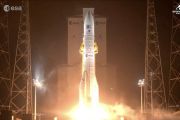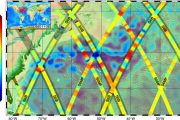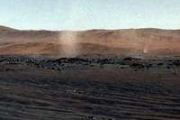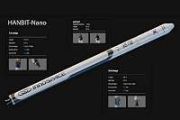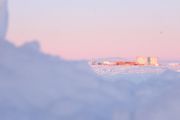
Copernical Team
Redwire launches 200 million dollar public stock offering to accelerate growth and reduce dilution
 Redwire Corporation has announced the launch of a $200 million underwritten public offering of its common stock. The company plans to grant underwriters a 30-day option to acquire up to 15% more shares than initially offered. The final size and completion of the offering will depend on market and other conditions.
Redwire intends to allocate the net proceeds toward general corporate initia
Redwire Corporation has announced the launch of a $200 million underwritten public offering of its common stock. The company plans to grant underwriters a 30-day option to acquire up to 15% more shares than initially offered. The final size and completion of the offering will depend on market and other conditions.
Redwire intends to allocate the net proceeds toward general corporate initia Astroscale to lead UK Orpheus mission with GBP 5.15M defence contract
 Astroscale Ltd. has secured a GBP 5.15 million contract from the UK's Defence Science and Technology Laboratory (Dstl), via the BAE Systems-led Serapis framework, to spearhead the Orpheus mission aimed at advancing space situational awareness and weather monitoring capabilities.
As reliance on space-based infrastructure increases, the threat from space weather, hostile activity, and orbita
Astroscale Ltd. has secured a GBP 5.15 million contract from the UK's Defence Science and Technology Laboratory (Dstl), via the BAE Systems-led Serapis framework, to spearhead the Orpheus mission aimed at advancing space situational awareness and weather monitoring capabilities.
As reliance on space-based infrastructure increases, the threat from space weather, hostile activity, and orbita A cosmic map emerges as astronomers trace missing matter to intergalactic space
 Astronomers have successfully traced the bulk of the Universe's "missing" ordinary matter to the intergalactic medium, using fast radio bursts (FRBs) as cosmic probes. Researchers from the Center for Astrophysics | Harvard and Smithsonian and Caltech leveraged these powerful signals to detect the faint, elusive gas long suspected to float between galaxies, finally providing a detailed census of
Astronomers have successfully traced the bulk of the Universe's "missing" ordinary matter to the intergalactic medium, using fast radio bursts (FRBs) as cosmic probes. Researchers from the Center for Astrophysics | Harvard and Smithsonian and Caltech leveraged these powerful signals to detect the faint, elusive gas long suspected to float between galaxies, finally providing a detailed census of Millennium Space Ships TRACERS Spacecraft to Launch Site for NASA Mission
 Millennium Space Systems, a Boeing subsidiary, has delivered two spacecraft for NASA's Tandem Reconnection and Cusp Electrodynamics Reconnaissance Satellites (TRACERS) mission to Vandenberg Space Force Base. The milestone sets the stage for final integration and launch preparations ahead of the scheduled summer 2025 window.
"This achievement highlights the dedication of our team and collab
Millennium Space Systems, a Boeing subsidiary, has delivered two spacecraft for NASA's Tandem Reconnection and Cusp Electrodynamics Reconnaissance Satellites (TRACERS) mission to Vandenberg Space Force Base. The milestone sets the stage for final integration and launch preparations ahead of the scheduled summer 2025 window.
"This achievement highlights the dedication of our team and collab Cosmic magnifying effect to unlock dark matter mysteries with Roman telescope
 NASA's Nancy Grace Roman Space Telescope, set to begin science operations in 2027, is expected to uncover more than 160,000 gravitational lenses-cosmic alignments where a foreground galaxy bends and magnifies the light of a background galaxy. Researchers led by Bryce Wedig, a physics graduate student at Washington University in St. Louis, aim to harness these rare phenomena to probe the structur
NASA's Nancy Grace Roman Space Telescope, set to begin science operations in 2027, is expected to uncover more than 160,000 gravitational lenses-cosmic alignments where a foreground galaxy bends and magnifies the light of a background galaxy. Researchers led by Bryce Wedig, a physics graduate student at Washington University in St. Louis, aim to harness these rare phenomena to probe the structur What if the Big Bang wasn't the beginning? Our research suggests it may have taken place inside a black hole
 The Big Bang is often described as the explosive birth of the universe - a singular moment when space, time and matter sprang into existence. But what if this was not the beginning at all? What if our universe emerged from something else - something more familiar and radical at the same time?
In a new paper, published in Physical Review D (full preprint here), my colleagues and I propose a
The Big Bang is often described as the explosive birth of the universe - a singular moment when space, time and matter sprang into existence. But what if this was not the beginning at all? What if our universe emerged from something else - something more familiar and radical at the same time?
In a new paper, published in Physical Review D (full preprint here), my colleagues and I propose a Missing Matter in Universe Found
 The vast majority of matter in the universe is dark-it is entirely invisible and detected only through its gravitational effects. Ordinary matter-everything from protons to planets to people-makes up only 16 percent. Unlike dark matter, ordinary matter emits light of various wavelengths and thus can be seen. But a large chunk of it is diffuse and spread thinly among halos that surround galaxies
The vast majority of matter in the universe is dark-it is entirely invisible and detected only through its gravitational effects. Ordinary matter-everything from protons to planets to people-makes up only 16 percent. Unlike dark matter, ordinary matter emits light of various wavelengths and thus can be seen. But a large chunk of it is diffuse and spread thinly among halos that surround galaxies Ethical and legal clarity urged as planetary defense faces asteroid threats
 A potentially catastrophic asteroid impact may seem like science fiction, yet the possibility remains real. Earlier this year, asteroid 2024 YR4 briefly raised alarms with a 1-2 percent chance of colliding with Earth in 2032. Although updated calculations have ruled out a threat in this instance, future threats remain a pressing concern.
A new research paper from Swinburne University of Te
A potentially catastrophic asteroid impact may seem like science fiction, yet the possibility remains real. Earlier this year, asteroid 2024 YR4 briefly raised alarms with a 1-2 percent chance of colliding with Earth in 2032. Although updated calculations have ruled out a threat in this instance, future threats remain a pressing concern.
A new research paper from Swinburne University of Te Rocket Lab books two responsive Electron missions for 2025 including launch this week
 Rocket Lab has confirmed it will launch two dedicated Electron missions in 2025 for an undisclosed commercial client, with the first liftoff scheduled for as early as June 20. This rapid turnaround highlights the company's growing reputation for fast, tailored access to space.
The inaugural flight, named "Symphony In The Stars," will lift off from Launch Complex 1 in New Zealand, placing a
Rocket Lab has confirmed it will launch two dedicated Electron missions in 2025 for an undisclosed commercial client, with the first liftoff scheduled for as early as June 20. This rapid turnaround highlights the company's growing reputation for fast, tailored access to space.
The inaugural flight, named "Symphony In The Stars," will lift off from Launch Complex 1 in New Zealand, placing a UP Aerospace debuts Spyder rocket with successful hypersonic test launch
 UP Aerospace has completed the inaugural launch of its Spyder hypersonic rocket, marking a major advancement in rapid-response flight capabilities. The launch occurred at 7:00 AM MST from Launch Complex 36 and achieved hypersonic velocities similar to those of the long-operating SpaceLoft missions.
The test was supported by the Navy White Sands Detachment and funded by the Stockpile Respon
UP Aerospace has completed the inaugural launch of its Spyder hypersonic rocket, marking a major advancement in rapid-response flight capabilities. The launch occurred at 7:00 AM MST from Launch Complex 36 and achieved hypersonic velocities similar to those of the long-operating SpaceLoft missions.
The test was supported by the Navy White Sands Detachment and funded by the Stockpile Respon 


